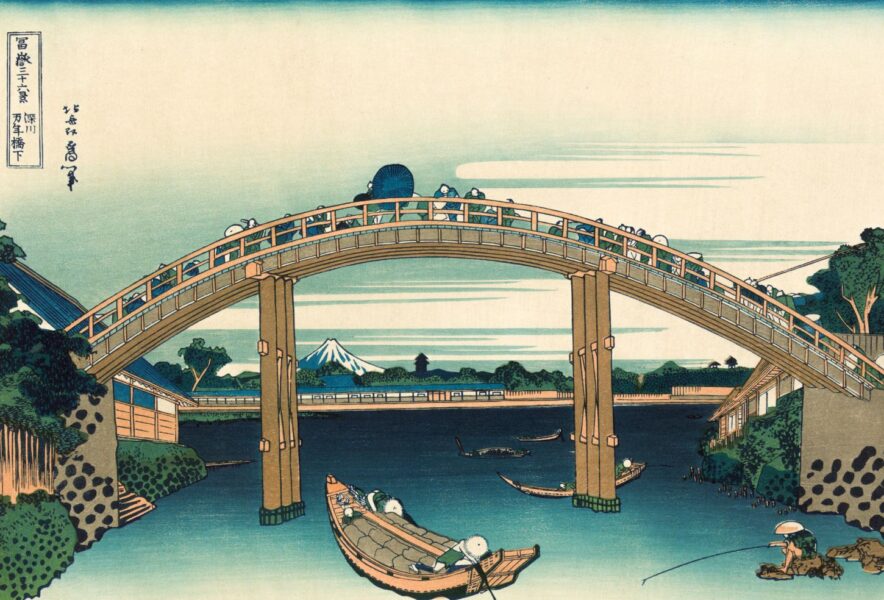Katsushika Hokusai, the legendary ukiyo-e artist behind timeless works like The Great Wave off Kanagawa, left an unforgettable legacy in the world of Japanese art. His influence extended beyond Japan, shaping global artistic movements. For those eager to dive into Hokusai’s world, Tokyo offers a treasure trove of locations and sites where the master artist lived, worked, and drew inspiration. Let’s take a journey through Tokyo, exploring the museums, historical landmarks, and neighborhoods that continue to celebrate Hokusai’s life and art.
- Who Was Katsushika Hokusai? A Brief Biography of the Ukiyo-e Master
- The Sumida Hokusai Museum: A Must-Visit for Art Lovers
- Famous Tokyo Spots in Hokusai’s Art: From Asakusa to Mount Fuji
- Retracing Hokusai’s Steps: Exploring His Old Neighborhoods
- Special Exhibitions and Events: Where to See Hokusai’s Work Today
Who Was Katsushika Hokusai? A Brief Biography of the Ukiyo-e Master
Katsushika Hokusai, born in 1760 in Edo (now Tokyo), is one of Japan’s most celebrated artists, known for his innovative ukiyo-e woodblock prints. Throughout his life, Hokusai adopted over 30 different names, continuously reinventing himself and his artistic style. His works, ranging from landscapes to portraits, reflect the beauty of nature and everyday life, with The Great Wave off Kanagawa becoming one of the most iconic images in art history.
Hokusai’s impact on both Japanese and Western art is immense. His detailed depictions of landscapes, particularly in the Thirty-Six Views of Mount Fuji series, redefined ukiyo-e art by bringing a focus on nature that was unusual for the time. Even today, his works continue to influence modern artists and art lovers worldwide.
The Sumida Hokusai Museum: A Must-Visit for Art Lovers
For fans of Hokusai, the Sumida Hokusai Museum is a destination not to be missed. Located in Tokyo’s Sumida district, where Hokusai was born and spent much of his life, this museum is a modern tribute to the artist. The museum houses a vast collection of Hokusai’s woodblock prints, sketches, and personal artifacts, giving visitors a deep insight into his artistic process and growth.
Exhibitions regularly rotate, offering fresh perspectives on his most famous series like Thirty-Six Views of Mount Fuji, while also showcasing lesser-known works that demonstrate his versatility. The museum provides not only an art-focused experience but also a historical context, immersing visitors in the Edo period’s culture and everyday life, which deeply influenced Hokusai’s work.
For more information, visit the Sumida Hokusai Museum’s website.
Famous Tokyo Spots in Hokusai’s Art: From Asakusa to Mount Fuji
Many of Hokusai’s masterpieces, including his celebrated Thirty-Six Views of Mount Fuji, feature landmarks in and around Tokyo. The Asakusa area, where Hokusai spent much of his life, often appears in his works, depicting vibrant street life, temples, and the natural landscape. One iconic example is Nihonbashi Bridge, a bustling hub in Edo during Hokusai’s time, which appears in several of his prints.
Another central theme in Hokusai’s work is Mount Fuji, Japan’s most revered mountain. His Thirty-Six Views of Mount Fuji series showcases the mountain from various perspectives, including scenes from Tokyo, with Mount Fuji majestically standing in the distance. Today, many of these locations remain recognizable, offering visitors the unique experience of seeing Tokyo through Hokusai’s eyes, bridging the gap between the city’s historical and modern landscapes.
Retracing Hokusai’s Steps: Exploring His Old Neighborhoods
Hokusai’s life was deeply intertwined with the neighborhoods of Sumida and Asakusa, both of which retain much of their traditional charm today. Walking through Asakusa, visitors can explore the narrow streets lined with small shops and visit Senso-ji Temple, Tokyo’s oldest Buddhist temple, which features prominently in many of Hokusai’s works.
In the Sumida district, where Hokusai was born, the past and present come together. Alongside historical sites, the towering Tokyo Skytree symbolizes modern Tokyo, providing a striking contrast to the Edo-period atmosphere that Hokusai captured. Visitors can join walking tours to fully experience these neighborhoods, gaining deeper insight into how these locations influenced the master’s art.
Special Exhibitions and Events: Where to See Hokusai’s Work Today
Tokyo frequently hosts special exhibitions and events dedicated to Katsushika Hokusai, providing opportunities for art lovers to view his masterpieces. Beyond the permanent collections at the Sumida Hokusai Museum, institutions like the Tokyo National Museum and Edo-Tokyo Museum regularly showcase Hokusai’s works in temporary exhibitions. These events often highlight rare pieces and explore the influence of Hokusai on global art movements.
Additionally, visitors can immerse themselves in traditional art-making techniques by participating in ukiyo-e print-making workshops, where they can learn the skills that Hokusai mastered during his lifetime. For the latest exhibition details and event information, it’s worth checking the Sumida Hokusai Museum’s website.

Comment